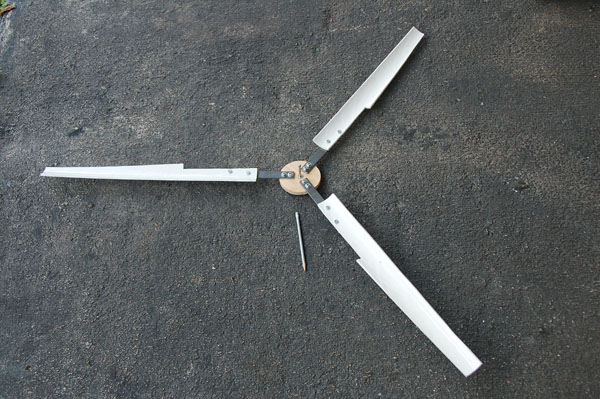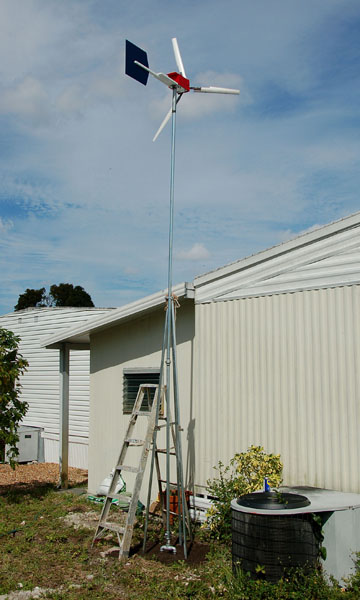Oh my.
It was basically a test for myself to see if it would post my diary. I did not expect it to pop up under the diary page. I would have added more information.
It is my first prop. The blades are obviously cut from a 4" pvc pipe, and they are about 2 feet long. The generator is an ametek 30V motor. At the moment it is running two little lights, just to have some load on it, but hopefully it will turn into a 12 volt battery charger for when a hurricane dropkicks us to the dark ages (which happens every summer at least once or twice).


I also experimented a little with filling the pvc with foam and covering it with fiberglass. Some success, but not very impressive yet. I read a lot about attempts to make fiberglass blades, but have seen little result yet (apologies to all who succesfully made their fiberglass blades;)
The next step is probably to make my own permanent magnet alternator. That will be with a bigger set of props (about 2m in diameter). Not sure yet if it will be pvc/fiberglass or a set of the fiberglass blades from China (ebay).
Any suggestions for alternator? Number of magnets/coils, wire size etc?
I have 24 rare earth magnets of 1.5 x 0.75 x 0.5 (I believe) and it will run on a 2 meter prop, charging a 12 volt battery.
Thanks for responding, and for all the helpfull information already posted on this forum.
Arno
potpower.com